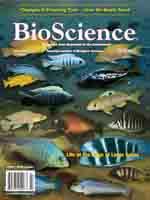On many campuses throughout the country, undergraduate biology education is in serious need of an upgrade. During the past few decades, the body of biological knowledge has grown exponentially, and as a research endeavor, the practice of biology has evolved. Education research has also made great strides, revealing many new insights into how students learn and producing effective teaching strategies. But the practice of undergraduate biology education does not reflect these advances. For many students, biology continues to be a laundry list of topics, countless new words and diagrams to memorize, and cookbook experiments to get through, rather than a conceptual understanding of the field and scientific skills.
Fortunately, there are three new initiatives for improving the undergraduate biology experience for students, each targeting different segments along the education system continuum. The first of these initiatives focuses on precollege biology teaching and learning. The College Board is making significant revisions to the Advanced Placement (AP) Biology course and exam ( http://advancesinap.collegeboard.org/science/biology). Teachers who were hard-pressed to cover the extensive AP Biology course outline in one year will welcome the changes. The revised AP Biology course emphasizes students' application of biological concepts, the use of quantitative reasoning, and the development of scientific skills. The final products will be officially released for use during the 2012–2013 academic year, and many experts believe that the changes will also influence undergraduate biology education.
Next, the American Association of Medical Colleges (AAMC) and Howard Hughes Medical Institute (HHMI) joined forces to focus on improving undergraduate learning for premedical students majoring in biology. The two organizations assembled a committee charged with elucidating the knowledge and skills that are essential for future physicians. The resulting Scientific Foundations for Future Physicians ( www.hhmi.org/grants/sffp.html), published in 2009, outlines competencies for premedical undergraduates, as well as for medical school students. The report recommends that premedical students be able to demonstrate a solid understanding of specific scientific concepts and skills as evidence of their preparation for medical school.
AAMC's Medical College Admission Test (MCAT) is set to be revised in 2015, with proposed changes in line with the AAMC—HHMI recommendations ( www.aamc.org/initiatives/mr5/preliminary_recommendations). “Now is the time for science faculty to get involved” in ensuring that undergraduates are prepared for these changes, notes HHMI Senior Program Officer Cynthia Bauerle.
Finally, the National Science Foundation (NSF) funded and the American Association for the Advancement of Science (AAAS) is facilitating the redesign of undergraduate biology education for all students, regardless of their future career aspirations. Vision and Change in Undergraduate Education: A Call to Action ( http://visionandchange.org/finalreport), published in February 2011, is the culmination of five years of work.
Vision and Change, as it is commonly known, originated in discussions among staff members from two directorates at NSF: the Education and Human Resources directorate and the Biological Sciences directorate. They acknowledged the need for a stronger connection between biology as a research endeavor and biology as an undergraduate experience for students. From 2006 to 2007, with NSF funding and additional support from HHMI and the National Institutes of Health, AAAS held a series of face-to-face meetings across the country with undergraduate students, faculty members, and professional society leaders. Participants discussed a wide range of topics, including what courses should look like, how to better prepare faculty, how to influence institutional change, and what barriers to improving undergraduate biology education remain.
The meetings were followed in 2009 by an invitational conference attended by hundreds of people engaged in undergraduate biology education, including faculty members, students, and administrators. Using the outcomes of the meetings as a starting point, the conference participants divided into groups to further explore assessment strategies, student research experiences, faculty development, student learning, institutional change, and unifying concepts and competencies. In the months that followed, a working group synthesized the results and produced a final report, which was released at the 2011 AAAS annual meeting.
The report makes three major recommendations: (1) All undergraduate biology curricula should include the described “core concepts for biological literacy” and “core competencies and disciplinary practice,” (2) students' learning must be the focal point for teaching, and (3) there must be full-scale institutional investment to improve undergraduate biology education. To inspire change, the report also shows how these goals can be achieved, giving snapshots of success stories at colleges and universities, within professional societies, and through student-centered programs.
As with any report of recommendations, publication is just the first step. Implementation, followed by evaluation, will be the critical next steps. Of the three initiatives presented here, the Vision and Change report will be the most challenging to implement. The kinds of changes it describes will not be driven by an exam, as were the AP Biology revisions, or by entrance requirements, as was the AAMC—HHMI report. Instead, improvements to biology education for all students will need to be driven by the entire community, including faculty, institutions, funding agencies, and employers.





